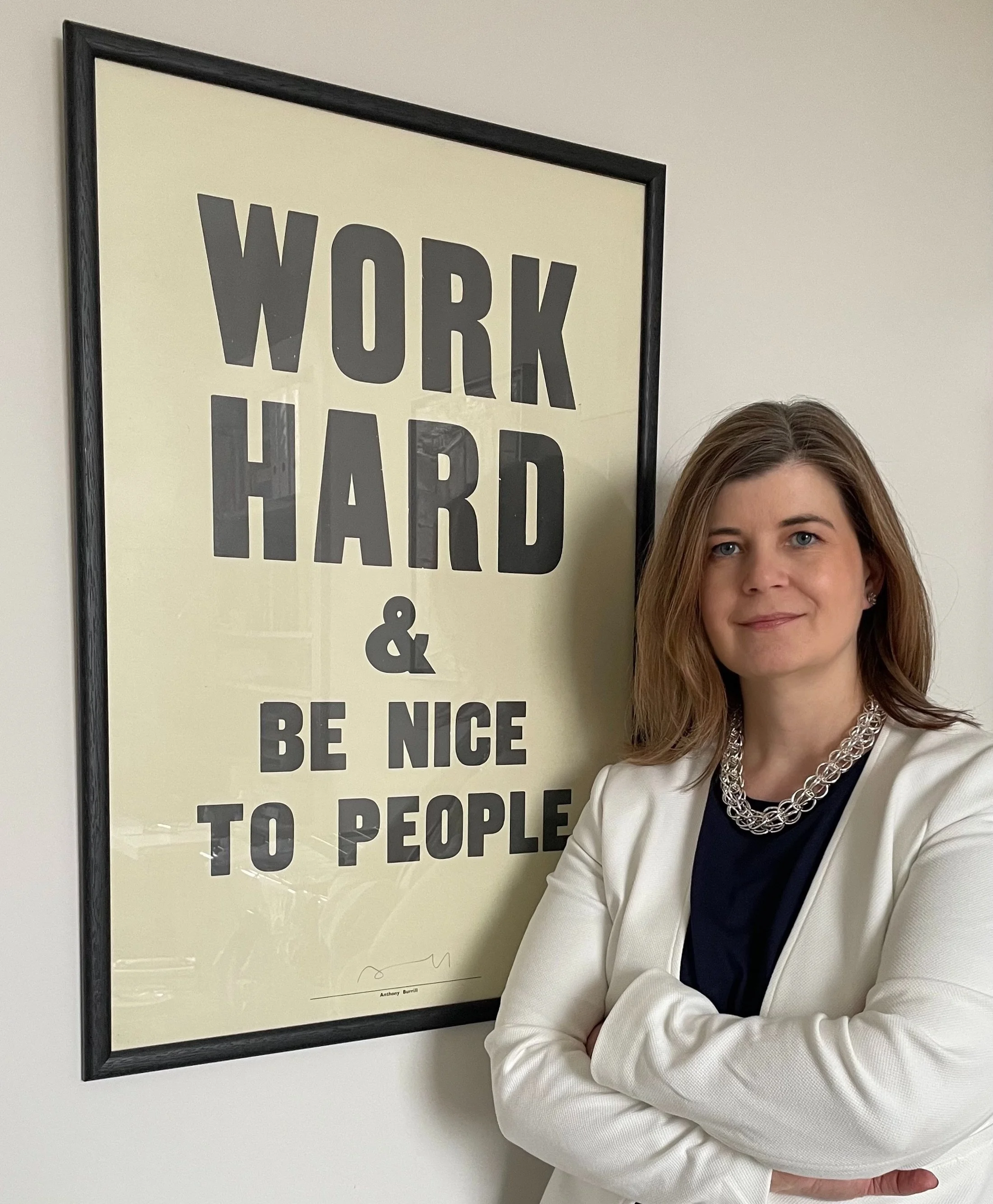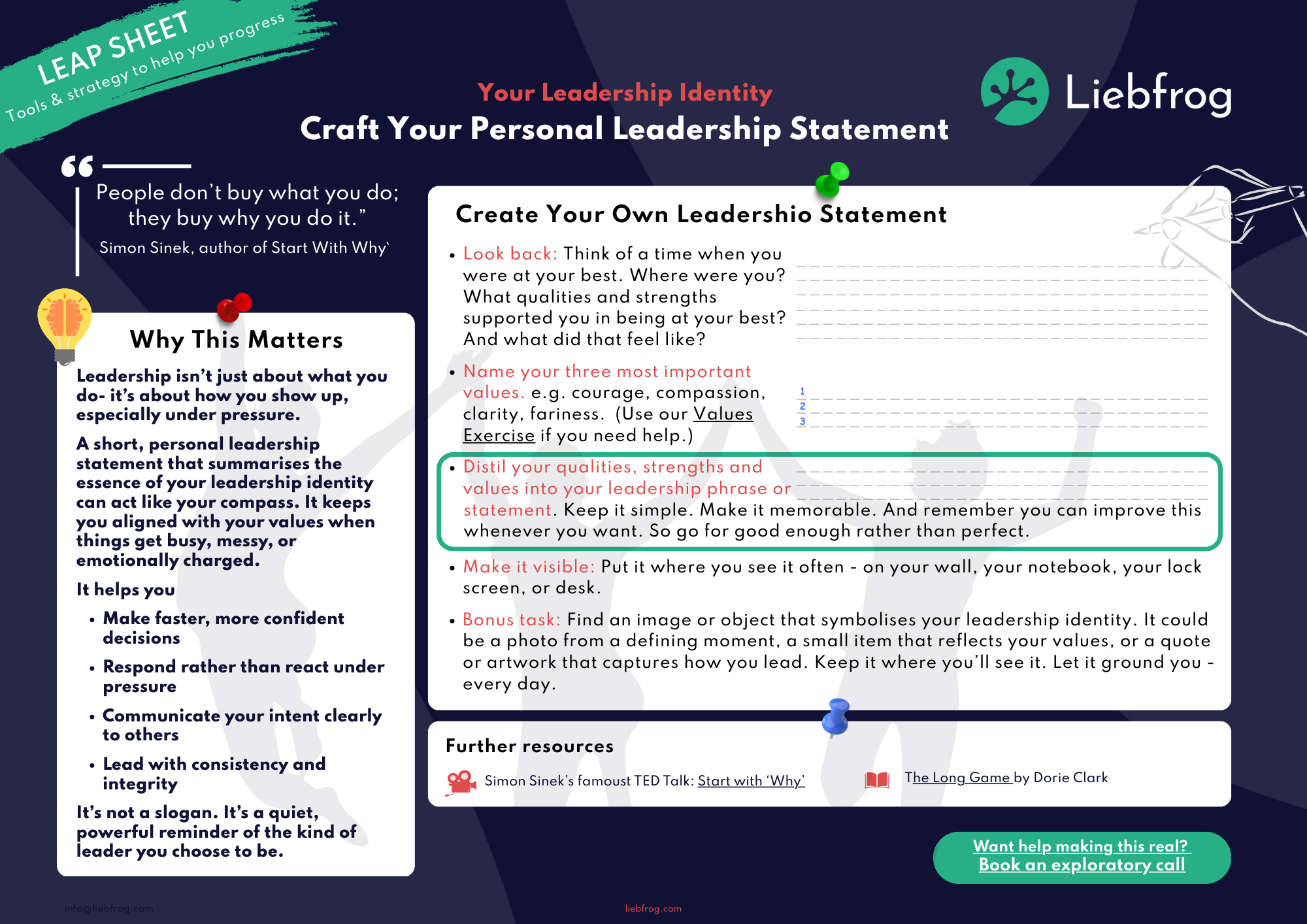What’s On Your Wall?
The Silent Cues That Shape How You Lead
Summary: What we choose to keep in sight - on our walls, desks, or screens - can quietly but powerfully shape how we lead. A photo, a phrase, or a meaningful object can act as a daily anchor, keeping us aligned with our values and intent. A personal leadership statement does the same: it's a short, visible expression of how you want to lead. This article shows you how to craft yours and use it as a steadying guide in the moments that matter.
A client and I were talking in his office recently when a picture on the wall caught my eye. It was of Mount Kilimanjaro. “I took that years ago when I climbed it,” he said, adding with a small laugh, “I was much younger and fitter…” That picture now hangs in his office - not just as a memory of the climb, but as a daily reminder of something more significant: from base camp, the summit looked impossibly far. But step by step, with persistence and focus, he got to the top. Today, whenever he is facing a challenge, the image reminds him of what is possible.
This made me think about what we choose to surround ourselves with. What we pin to our walls, keep in our notebooks, or save as our screensaver. These aren’t just decorations. They’re cues. They remind us of something that matters. And nudge us back into alignment when the day pulls us off track.
On my own wall is a print by British artist Anthony Burrill I bought years ago, long before I started working with leadership ideas like clarity and decency. In bold black capital letters, it says: “Work Hard & Be Nice to People.” The message struck a chord back then. It still does.
That Kilimanjaro photo and the print on my wall may look very different, but they serve a similar purpose. They anchor us. They help us remember what matters.
Craft Your Leadership Statement
One of the exercises we often use in coaching is helping people define a short, personal leadership statement. A phrase or a series of words that summarises the essence of what they believe in and how they want to show up. Something they can pin on the wall, repeat to themselves before a big meeting, or simply carry in their mind as a compass.
Here’s how to create one of your own:
Think of a moment when you were at your best. What qualities and strengths supported you in being at your best? And how did that feel?
Identify the values or principles that guided you? For example: Courage. Fairness. Ambition. Or Generosity. (If you need help, you can download a short values exercise from our Leap Sheet library.)
Now destil your strengths, qualities, and values into a short sentence or phrase. Something you’d be proud to live by. That represents how you want to be seen by others. Keep it simple. Make it memorable. (And remember that you can improve it whenever you want. So instead of trying to make it perfect, make it 'good enough for now'.)
Put it somewhere visible! On your wall, desk, screensaver, or phone lock screen. Anywhere it can do its work.
Bonus task: Find an image or object that symbolises your leadership identity. It might be a photo from a defining moment, a small object that reflects your values, or a piece of art that captures how you want to show up and lead. Like my client’s photo of Kilimanjaro, it can remind you that what might feel impossible right now can be achieved, step by step. Or like Anthony Burrill’s bold words on my own office wall, it can reflect a principle that keeps you grounded in who you are.
Sometimes the most powerful tools are the simplest ones. And sometimes a simple sentence, phrase, or photo on the wall is all it takes to keep us grounded and remind us - every day - of the kind of person we already are, and the kind we are becoming.
May 2025
Leap Sheets - Your Leadership Toolkit
Have you checked out our new Leap Sheet library yet? These handy one-pagers are designed to help you reflect, reframe, and take action on everyday leadership and career challenges. They’re quick to read, easy to save, and full of practical prompts to help you take action.
Sign up for free to access the full (and growing) library.
If you’ve enjoyed this article and don’t want to miss future reflections and resources then do sign up for monthly newsletter.



